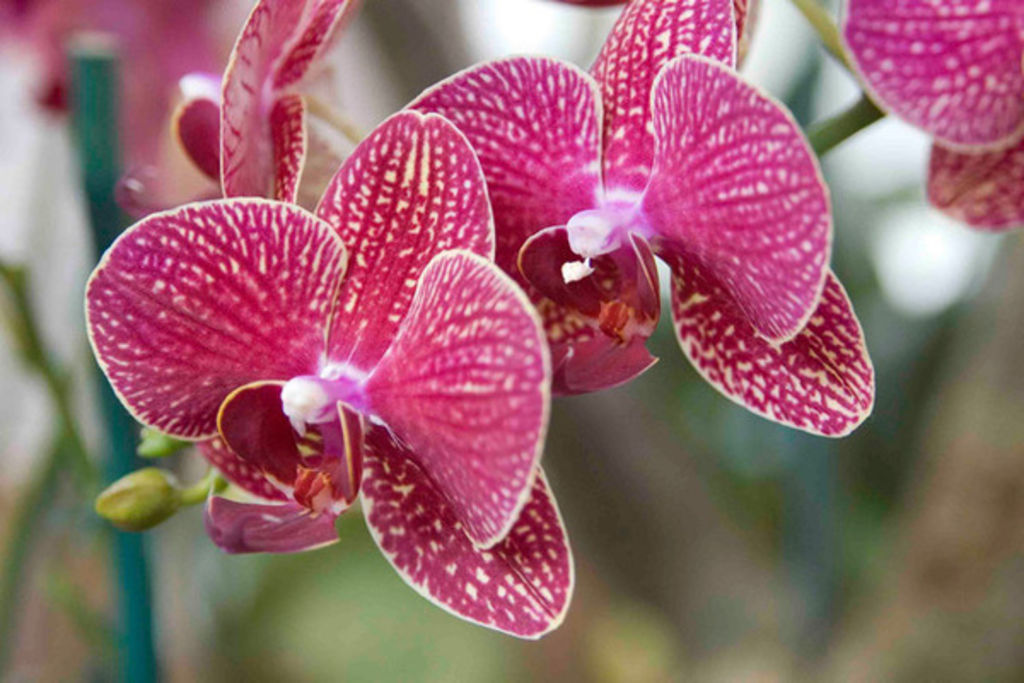The August checklist for gardeners

Moth Orchid photographed by Hayden Lees for The New York Botanical Garden
Author: Carol Bucknell
Don’t let the winter doldrums get you down – start planning your spring garden now so everything is ready to go once the weather warms up. Get the secateurs out and finish your pruning if it’s not too chilly in your region. And if you do live in a frosty place, get a jump on the cold weather by sowing seed in pots under glass or indoors. Remember the birds during winter and grow nectar-rich plants such as Aloe, bottlebrush (Callistemon), flowering cherries (Prunus) and Banksia.
Browse popular garden designs on Houzz
1. Grow moth orchids
Winter flowering orchids are great for brightening up indoor and sheltered exterior spaces. Moth orchid (Phalaenopsis) is one of the easiest orchids to grow, thriving in temperatures of 16 to 24 degrees celsius. Keep away from direct sunlight and heaters, and increase the humidity by sitting pots on a bed of pebbles in water. Feed with dilute orchid food regularly.

2. Sow winter salad greens
Most lettuces can be grown in winter if temperatures are not too cold, but if you’re keen to try something else, there are plenty of other cold-hardy salad greens you can grow. Some such as mizuna and rocket are part of the Brassica family and have that wonderfully familiar peppery taste. Others like endive or radicchio are forms of chicory, and are very popular in Mediterranean regions. Highly nutritious and generally easy to grow, all deserve a place in the winter garden.
How to kick-start your vegetable garden this winter

3. Divide artichoke plants
If clumps are large, divide artichoke plants and replant into rich, fertile soil with plenty of space between them.

4. Reset lawn mower blades
As the weather warms, so lawns start to flourish. For the first cut of the season, it’s best to set lawnmower blades high and then reduce the height gradually for successive cuts until early summer. Never cut lawns too closely, though; drastically scalping grass plants used to be common but gardeners now realise this means the grass will have no protection for its roots during the heat of summer and will reduce its ability to photosynthesise.
5. Start your vegies early
Sowing spring and summer vegetable seeds under glass or on a windowsill now means they will be well established by the time you plant them; that is, when the soil warms up. Try doing this with aubergine, capsicum, cabbage, celery, cucumber, lettuce, radish, tomato, spring onion and spinach.
TIP: When watering seedlings under cover, use tepid water so they don’t rot.
Easy vegetable gardens for black thumbs

6. Plant early seed potato varieties
In warmer areas, you can start planting potatoes in August, but you need to make sure they are an early season variety, not a mid- or late-season potato – always select potatoes that suit your part of the country or plants won’t be productive.
Choose seed potatoes with at least one sprouted eye and keep in a well lit (not sunny) spot for a week or three to allow more shoots to develop. Plant in a sunny, well drained position.
TIP: Don’t forget to check quarantine restrictions; they may prevent you buying seed potatoes from certain states.
Shop for gardening tools online
7. Grow easy care chives
There are many good reasons for having chives (Allium schoenoprasum) – common or garlic varieties – in your herb garden: they’re hardy, easy care, can be grown throughout the year, have pretty flowers in summer and can be used in virtually any style of cooking.
Seedlings are usually always available in garden centres or you can sow seed in spring directly into the ground. Chive plants need free-draining soil and a sunny position. Remember to cut off flowers to keep plants producing new leaves.
TIP: Chives are also great for container cultivation.
8. Tidy up bird of paradise
Remove old flowers and leaves from bird of paradise (Strelitzia reginae) to encourage new blooms in spring.

9. Plant poinsettia
The bold, flame-red (also pink, yellow, and white) blooms of poinsettias (Euphorbia pulcherrima) light up the winter garden – ‘Pulcherrima’ actually means ‘very beautiful’. These Mexican shrubs thrive outside in frost-free places or you can buy a potted plant for indoors in colder areas. Their flowers can be cut if you seal the stems by dipping them in boiling water or holding them over a flame for 15 seconds.
TIP: The white sap produced by poinsettias can be toxic for sensitive skins so make sure you wear gloves when cutting.
10. Feed the birds
There’s less to eat in the garden for our feathered friends during winter, so think about growing some plants that will provide valuable nectar during the colder months. These include many species of Aloe, bottlebrush, Camellia, flax (Phormium), flowering cherry, Protea, red hot pokers (Kniphofia), Grevillea,Hakea and Banksia.
Find landscape contractors and professional gardeners in your area
We recommend
We thought you might like
States
Capital Cities
Capital Cities - Rentals
Popular Areas
Allhomes
More







